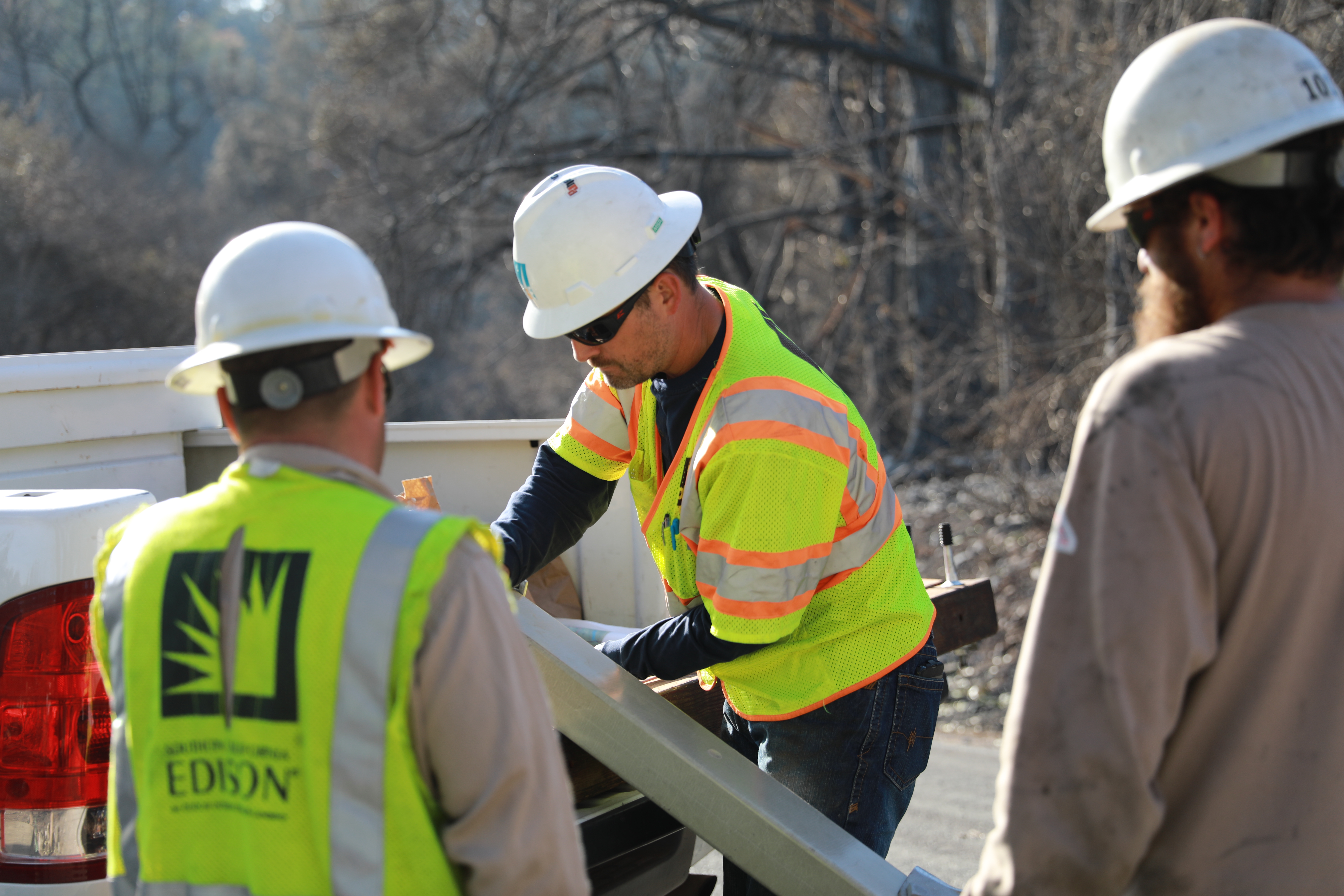Keeping Communities Safe From the Risks of Wildfires
Keeping Communities Safe From the Risks of Wildfires
Public Saftey Power Shutoff Fact Sheet
(Chinese / Korean / Spanish / Vietnamese)
Marjorie Eason has been through five wildfires over the five decades she has lived in her Brea home, including the 2008 Freeway Complex Fire that raced from Corona into Orange County, shutting down the 91 Freeway and neighborhood streets.
Although Eason was safely at work that day and her home undamaged, she admits the incident left her nervous about wildfires.

Eason heard Southern California Edison is taking steps to help mitigate wildfires, including a plan to shut off power to high fire risk areas like hers during extreme weather conditions. She joined about 60 other residents at a recent SCE community meeting to learn more about the power shutoff plan and how it might affect her.
“Will the ATMs be open? Do I have to make sure I have enough gas? Do I have enough food? What is my game plan going to be? What about my elderly disabled neighbors?” she asked.
TIPS
- Be sure SCE has your correct phone, text or mail contact information so you can receive outage alerts. You can sign up through your account at sce.com under “Profile” or call 800-655-4555.
- Learn how to prepare for a power outage or any other disaster at ready.gov/.
SCE is holding community meetings in high fire risk areas across its territory to explain the additional wildfire measures it is taking to protect the public and secure the power grid.
“We no longer have a wildfire season — the risk is now year-round,” said Bill Chiu, SCE’s director of Grid Resiliency and Public Safety. “We’ve always had safety measures to address the wildfire risks, but these additional measures represent a shift in recognition of this ‘new normal.’”
He said the meetings are designed to educate the community so residents know what to expect about the mitigation measures being taken.
The Public Safety Power Shutoff, when SCE turns off power in a high fire risk area because of extreme weather conditions, is one of those procedures.
“Shutting off the power is just one tool in a large portfolio,” Chiu said. “We will use it only under the most extreme weather conditions as a preemptive measure to reduce the risk of a power line being involved in starting a fire.”

Other measures include hardening SCE’s infrastructure. This includes replacing 600 miles of power lines with covered conductor and installing fire-resistant power poles. SCE is also enhancing its situational awareness about real-time conditions in the field using advance weather modeling and dozens of new remote weather stations and cameras.
The company is implementing a series of operational procedures in response to extreme fire conditions like expanding the area near power lines for tree trimming and turning off automatic circuit testing during red flag warnings to prevent a fire from a downed line.
How Public Safety Power Shutoff Works:
- SCE officials understand the impact turning off the power could have and will only act when weather conditions combine to pose an extreme wildfire threat in an area.
- The power shutoff will not necessarily affect the whole community, only the areas identified as high fire risk. Based on historical weather records, SCE anticipates conditions that might prompt a power shutoff could possibly happen two to 10 times a year across the company’s entire 50,000-square-mile territory.
- Before a power shutoff happens, SCE meteorologists will begin, up to a week in advance of a predicted severe weather condition, running computerized weather simulations of expected conditions.
- Two days in advance, if the National Weather Service calls a red flag alert, SCE will begin working with local governments and first responders and will notify customers by phone message, text or email, that a power shutoff is possible.
- The power will only be shut off after the weather data, confirmed by SCE personnel in the field, show there is an imminent danger of objects such as tree limbs, palm fronds or other vegetation blowing into power lines. The shutoff will be done in consultation with local officials and emergency response personnel such as local fire departments. Customers will be notified again when the power is shut off.
- It could take some time for power to be restored because SCE must wait until the weather conditions abate and for the circuit to be visually patrolled for possible problems, like downed lines or trees in lines.
Chiu said customers, like preparing for any disaster, should have a plan for being without power beyond 24 hours.
Once power is restored, affected customers will be notified.
Eason said she was reassured after hearing the presentation, especially that she would get so many notifications before a power shutoff.
“That’s more than we have ever gotten,” she said. “Before, we didn’t know what was going on.”
Ultimately, Eason hopes that luck will remain with her.
“I’ve survived here 53 years through a number of fires,” she said. “I’m just hoping this doesn’t happen.”





